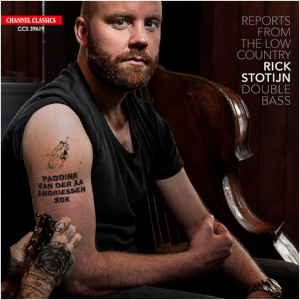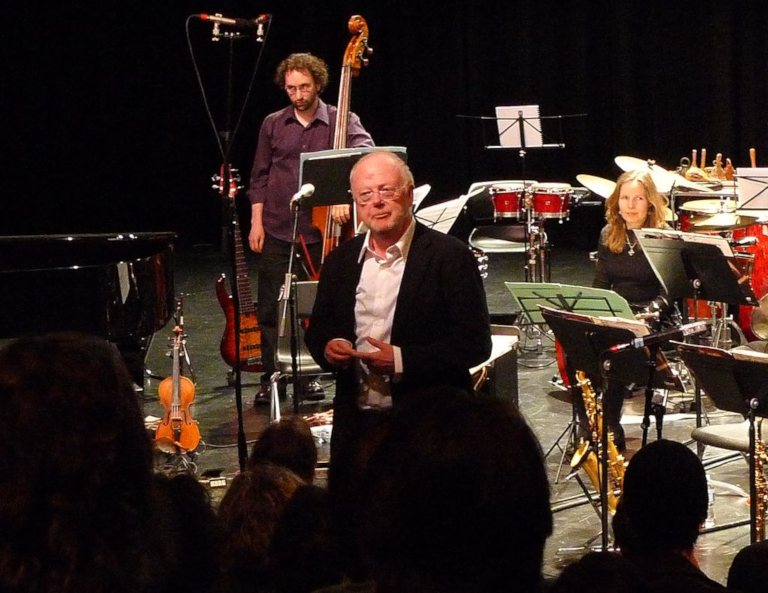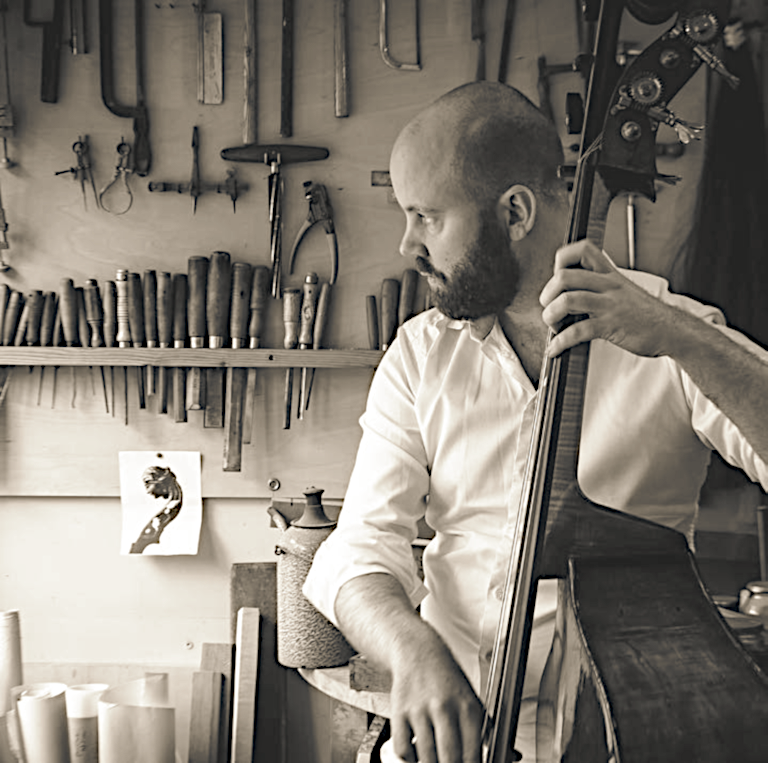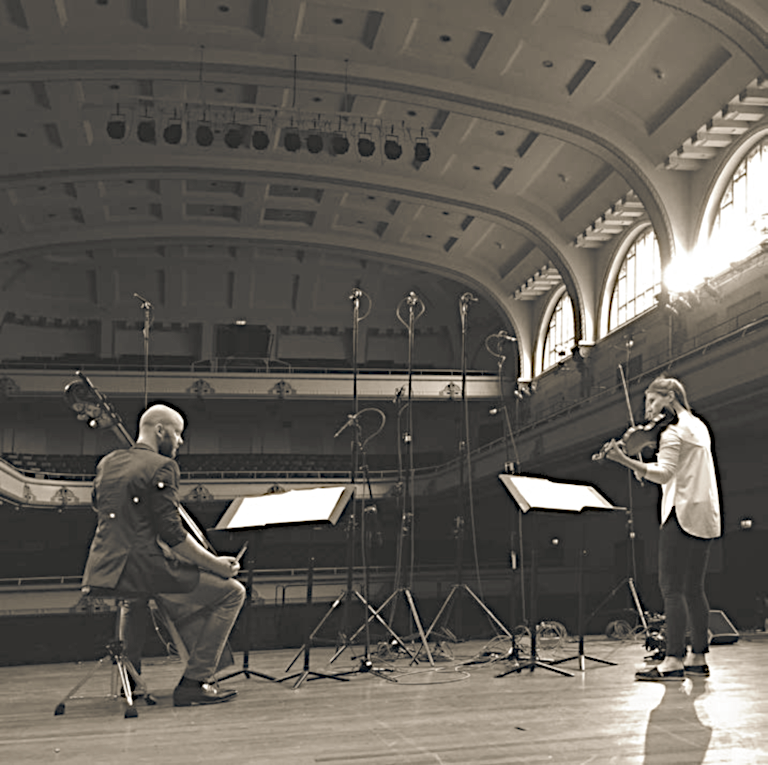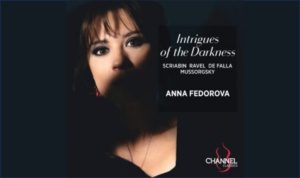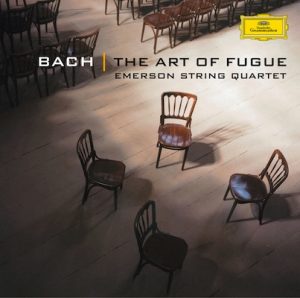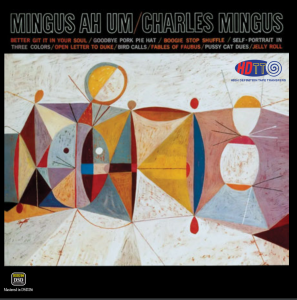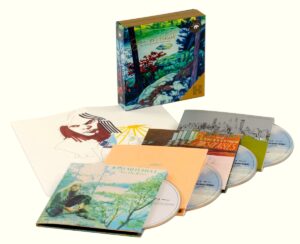Reports From The Low Country, Rick Stotijn (double bass), Channel Classics (2019 DSD256, DXD) (HERE)
When a master plays, the double bass is one of the most amazing instruments. And so it is in this 2019 recording by bassist Rick Stotijn. Focusing on compositions by Dutch composers from the past 50 years, Stotijn brings his formidable technique to bear in four works for double bass by four different composers.
Composers Louis Andriessen, Hans Kox, Martijn Padding, and Michel van der Aa have created works that bring the double bass out of its traditional supporting role in the orchestra to the front as a solo instrument, and as the principal instrument in a small ensemble. And Rick Stotijn brings delicious life to each of these compositions with his stylistic openness, flexibility, and ferocious technique.
Louis Andriessen (b. 1939) is possibly the best known Dutch composer to listeners outside of Holland. His Elegy for double bass was composed in 1957 near the beginning of his long career as a composer. This work is more tonal than much of his later work, and makes for a nice introduction to explore more works by this boundaries pushing composer.
Louis Andriessen at a celebration to honor composer's 70th birthday, Roundhouse Community Arts & Recreation Centre, Vancouver April 5, 2009. (Photo by jmv, CC BY 2.0) HERE
Martijn Padding's Reports From The Low Country provides the title for the album and the first three tracks. This three-movement concerto with orchestra was composed in 2016 for Rick Stotijn, and challenges the soloist to venture at the very extremes of the double bass, a challenge well suited to Stotijn's sensibilities. Sometimes his double bass sounds like a violin and at other times, by striking the strings, like percussion. The liner notes tell us that Padding spent many hours with Stotijn exploring the playing techniques and tonal possibilities of the instrument.
Martijn Padding (b. 1956) studied composition with Louis Andriessen. Andriessen's conceptual way of composing, and his sober and anti-romantic approach have left their mark on Padding's own style. The work's title refers both to the flat Dutch landscape scored by linear canals and to the low register of the double bass. I find it to be an invigorating and highly charismatic role for the double bass. The sounds of the orchestra, ably conducted by James Gaffigan, are varied and colorful, from accordion, to high flutes, to extensive percussion, all presenting nice alternating contrasts to Sotijn's double bass.
For The Time Being, a three-movement piece by composer Michel Van der Aa (b. 1970), another student of Louis Andreissen, plays on the works of British poet Carol Ann Duffy. After an instrumental opening section for violin and double bass, the following movements include mezzo soprano Christianne Stotijn musing on frustrations in love and loneliness. The final section of this piece is intended to have strong theatrical impact. Says Van der Aa: "It's a very up-tempo, jazzy-poppy piece and it shouldn't sound too cultured." It begins by the singer excitedly striking Stotijn's double bass and ends by shouting "BASTARDS !" (Yes, it will wake you up.)
Rick Stotijns and Rosanne Philippens, violinist, in recording session for "For The Time Being."
Hans Kox's (1930-2019) Four Studies for double bass solo concludes the album. This brief four minute, four-movement, composition is in the Baroque tradition of slow-fast-slow-fast movements. It opens with a meditative vocalese for the double bass performed like an improvisation. A lively scherzo follows, then a lyrical slow movement and a virtuosic finale, whose compelling 6/8 meter suggests a Baroque gigue. But the work sounds thoroughly modern. Stotijn brings it off perfectly and most engagingly. Very enjoyable music making!
For a further introduction to this album, you might consider watching the following eight minute YouTube video with excerpts from the recording session and comments by Rick Stotijn.
I thoroughly enjoyed this album. It is a very engaging exploration of the sounds of the double bass through varied contemporary compositions that cross a variety of musical styles. That all four composers studied with Louis Andreissen adds, for me, a further compelling reason to hear this recording in its entirety.
The sound quality is another superb success from recording engineer Jared Sacks and Channel Classics. The sound is supremely natural, capturing the wonderful balance of direct and ambient sound to capture the emotional energy of these performances, whether in instrumental solo, small ensemble, or full orchestra. A great introduction to the sound and performance qualities I have come to expect of Channel Classics!
Highly recommended!
Photos courtesy of Channel Classics




